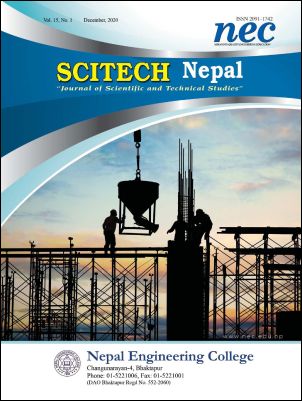Occupational Hazards in Building Construction
DOI:
https://doi.org/10.3126/scitech.v15i1.49098Keywords:
Occupational hazards, Building ConstructionAbstract
Minor injury to fatality and permanent disablement cases due to accident at the construction sites are one of the highest as compared to the other sector. Hence, there is an urgent need to mitigate this problem. The first step that should be taken is identifying the hazard to ensure a safe and conducive working condition. Therefore, this paper is intended to identify and highlight the hazards that are most commonly found at our construction sites today. The data collection was carried out through a questionnaire forms and checklist survey regarding hazards in construction. The sites include high rise commercial building projects. The study determines six major groups of hazards in relation to works at construction sites such as physical, chemical, mechanical, biological, psychological and physiological hazards. The study was conducted on 50 contractors and 5 building construction sites. The results showed that the most common hazards for the project around the study area are noise, electric shock and vibrations as the major physical hazards; cement dust and sand dust as major chemical hazard; hit by equipment as major mechanical hazard and job dissatisfaction as major psychosocial hazard in building construction projects. Thus, contractors should be responsible and accountable for documenting different types of hazards as they are implementing agent of safety during the construction and development of any project. For this, awareness level should be increased by conducting regular awareness program, along with engineering and enforcement activities.




